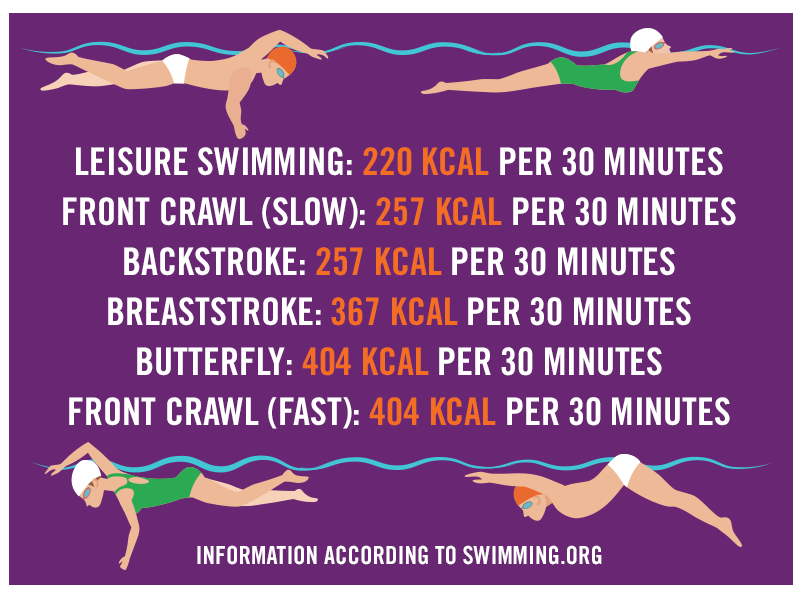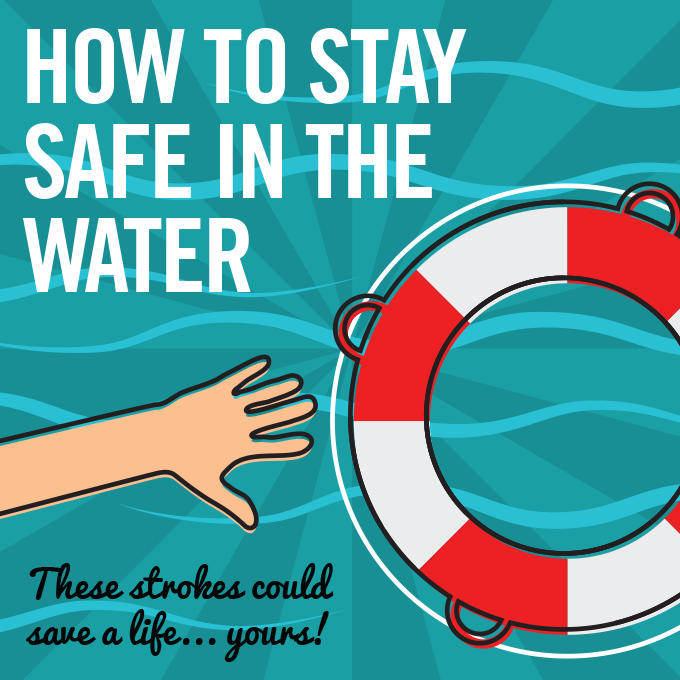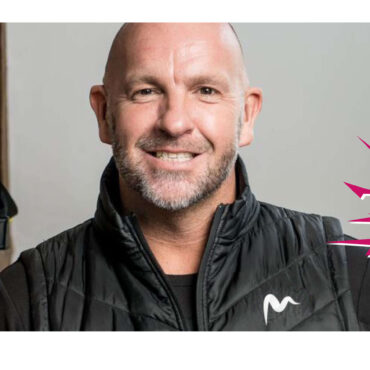In the UK alone, one person dies as a result of drowning every 20 hours. Across the world there are 400,000 recorded cases of drowning, not to mention the hundreds of thousands of cases that aren’t recorded. Whether you’re a child or an adult, on holiday or at home, drowning can sadly affect any one of us.
Drowning Prevention Week
Every year, the Royal Life Saving Society UK holds their Drowning Prevention Week, held in mid-June. This is a national campaign that provides individuals and organisations with the adequate resources to spread the word about water safety and precautions.
The scary truth is that, even though 85% of drownings happen in open water, it is possible to drown in as little as a 5cm depth of water. The most important thing that we can all do to help avoid this potentially fatal situation is to get clued up on the facts, and protect ourselves in the best way we can. This starts with learning how to swim.
Learning to swim as a child
Drowning is the third highest cause of accidental death in children. As double Olympic gold medalist Rebecca Adlington stated at the Big School Swim event in April, swimming is the only sport that is an essential life skill. Despite being a national curriculum requirement for 125 years, only 52% of primary school children can swim, and many still slip through the net and start secondary school without knowing how.
More than sixty children drown during the summer every year in the UK. The sad fact is that in most of these cases, drowning could have been prevented if the child knew what to do when entering the water.
Infants can start swimming from birth; that’s yet another fact that makes swimming a unique sport. Most people start their baby swimming from the age of three months, using their bath at home as good preparation for getting their child used to water.
There are many national award and certification systems in the UK to teach children of all ages to swim in appropriate stages. Consult your child’s sports teacher for more information, so as to help them make the best and most suitable progress they can. Always use flotation devices made for the size of your child, an over sized flotation device is a disaster waiting to happen.
Learning to swim as an adult
As we get ever closer to the summer holidays and warm weather, flights and hotels in sunny destinations are being booked up left, right and centre. Whether it’s poolside, on the beach or by a picturesque lake, the most popular locations are those that have access to a cooling body of water.
However, not everyone will be up for a paddle, as one in five adults in England alone are unable to swim; that’s up to nine million people over the age of fourteen. This could be because they never learnt in the first place, or because a bad experience when learning has put them off, but nevertheless, the survey by the Amateur Swimming Association (ASA) also showed that 2.13 million of those adults have a desire to learn. If you are one of them, why not enquire at your local Active Nation venue and talk to a member of staff about adult classes?
It’s never too late to learn. Swimming is a great sport to incorporate all of the family in, so as a parent, don’t be the one to miss out. However, learning to swim isn’t just important for the times you’re planning on getting in a pool, lake or sea. Forty per cent of drowning victims didn’t anticipate being in the water, so being prepared for the unexpected is vital.
Aquaphobia
But in some cases, it might be a genuine fear that’s stopping a person from learning how to swim. If you have a genuine fear of water, you must first of all know that you are not alone; many people around the world suffer with aquaphobia, including famous faces like Jennifer Aniston, Zayn Malik and Carmen Electra (famous for, believe it or not, playing a lifeguard in Baywatch!).
First, make sure that you’re wearing proper attire. When first entering into a pool, remember to take your time, starting by getting your feet wet and gradually getting deeper into the water. Here are the tips suggested by Sports Psychologist Julie Johnston for swimming when overcoming aquaphobia (see her video here for more details):
Step 1: Gently splash water onto your face whilst thinking positive thoughts such as “fresh”, “pure” and “clean”
Step 2: Submerge half of your face into the water and begin to blow out bubbles
Step 3: Take a deep breath and then submerge your entire face under water, and then come back up to the surface
Step 4: Repeat Step 3 but this time, blow out bubbles when your head is fully submerged
Step 5: Sit on the bottom of the pool in the shallow end and blow out some bubbles
Julie also suggests that breaststroke is the best stroke to ease into swimming in a pool.
First Aid
Ask most people in the UK about swimming at school and their most vivid memory is likely to involve wearing pyjamas. Remember the school lessons, wading water for minutes, or diving after a rubber brick? It may have seemed a bit of a joke at the time, but not knowing what to do in an emergency could lead to fatal consequences. In ASA’s survey, the shocking truth was discovered that nine out of ten parents don’t know basic first aid skills that could help save a child’s life, and only twenty per cent think that they could resuscitate a child. If you’re considering learn to swim or brushing up your skills in order to help them learn, make sure that you have an up-to-date knowledge on first aid too.
Swimming benefits
Use the buoyancy of the water to aid your ability, the resistance to get more from your workout, and the cooling of the water to help keep you going for longer! Taking up swimming will improve your health and fitness all over your body, both inside and out.
Heart and lung health
Swimming is a great way to work on controlling your breathing and increasing your lung capacity. Like all anaerobic exercise, a high-intensity interval-style approach will maximize your results, and your cardio-health will improve too, as swimming helps make your heart pump more efficiently.
Flexibility and strength
Ever wondered why all professional swimmers have super lean bodies? That’s because in comparison to other activities, swimming gives fantastic results to the strength and tone of your muscles. Perfecting the strokes and stretching your muscles and ligaments with different motions will also help increase your body’s flexibility too.
Balance and posture
Making sure you’re keeping afloat during your water workout will keep you focused on your balance and posture. Once strengthened, this can be translated into all areas of your life.
Like a duck to water
The wonderful thing about swimming is that once you have learnt, you will have a skill for life that you’ll never forget. Not only will you be safer when in or near water, but you’ll also be opened up to a whole world of new water-related sports and activities.
Types of swimming
The basic strokes
2.6 million adults are doing half an hour of swimming at least once a week. Here’s a break down of the calories that can be burned for each stroke:

So even if you’re just going for a gentle swim, you could still be burning some impressive numbers.
Aqua aerobics
Aqua aerobics does exactly what it says on the tin; a session in the pool will provide you with all the benefits of an aerobic exercise class, but by being in the water, your body is better supported. It also means that there’s less stress being put on your joints and muscles. Although aqua aerobics classes are often recommended for those who are elderly or recovering from an injury, they are also a great way to combine fitness and a love of water.
Throughout June, Active Nation venues are running their Golden Ticket offer, giving you the opportunity to try out any exercise class for free, including aqua aerobics. To find out more about this fantastic deal follow the link here.
Dive in!
Pike, tuck, straight, free; these are all the positions you’ll have to master if you want to take to the diving board. Then of course, you’ll have to ask “How high”? There are many different denominations when it comes to diving, but professional divers like Tom Daley will have to conquer the start, approach, take-off, flight and entry stages to score the perfect 10, in just a matter of seconds.
Water polo
Now hear us out. Despite being a lesser-known sport (with the women’s Olympic competition only being introduced in 2000, 100 years after it was first present at the Games), a whopping 15,000 people in the UK take part in water polo sessions. If you want to join in with that gang, contact the ASA to find your nearest team.
Synchronised swimming
Synchronised swimming, water ballet or Synchro, as it’s also known, is not as straight-forward as it might seem from a spectator’s view. According to the ASA website, it’s the equivalent to running for up to five minutes while performing acrobatics, holding your breath, looking graceful and having to keep in time to music. Still think you’ve got what it takes?
Swimming for charity
Like any kind of challenge or event, if you have a good incentive, you’re far more likely to achieve great things. Why not sign up to a local Swimathon to not only raise some money for a worthy cause, but improve your swimming skills too?
The possibilities are endless!
If the list above wasn’t enough, there are many less obvious sports out there that you’d be unable to participate in if you aren’t a swimmer. Kayaking and canoeing are great sports for adrenaline junkies looking for a new adventure. Find out more about them by visiting Active Nation’s Woodmill venue page.
Holidays would never need to be the same again as you can now add scuba diving, snorkelling and surfing to your list of activities. If you’re already a runner and a cyclist, swimming could also open up the exciting new world of triathlons to you. Tokyo 2020? Never say never!


















